- What We Do
- Agriculture and Food Security
- Democracy, Human Rights and Governance
- Economic Growth and Trade
- Education
- Ending Extreme Poverty
- Environment and Global Climate Change
- Gender Equality and Women's Empowerment
- Global Health
- Water and Sanitation
- Working in Crises and Conflict
- U.S. Global Development Lab

December 2015
A Year in Review: 2015
As 2015 ends and the era of the Sustainable Development Goals begins, we share some key global health events, milestones, and highlights from the past 12 months of our efforts at the U.S. Agency for International Development (USAID) to end preventable child and maternal deaths, create an AIDS-free generation, and protect communities from infectious diseases, all in support of a world free of extreme poverty.
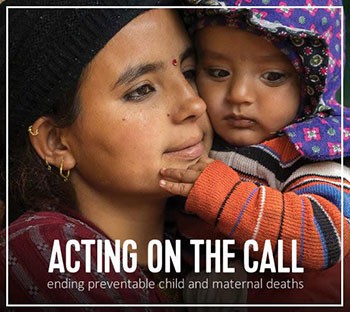
1. 2015 Call to Action Summit for Ending Preventable Child and Maternal Deaths
In August, USAID released the second-annual Acting on the Call report, providing updates on maternal and child health in 24 priority countries. USAID’s maternal and child survival efforts have resulted in nearly 2.5 million more children and 200,000 more women surviving since 2008. The report details how to reach 38 million of the most vulnerable women around the world with increased access to health care during delivery by 2020, saving the lives of 15 million children and 600,000 women.
The report was released by Prime Minister Narendra Modi of India at the Call to Action Summit for ending preventable child and maternal deaths, hosted in New Delhi by the Government of India along with Ethiopia’s Ministry of Health, USAID, UNICEF, the Bill & Melinda Gates Foundation, Tata Trusts, and the World Health Organization.
- Read the 2015 Acting on the Call: Ending Preventable Child and Maternal Deaths Report.
- Read the press release outlining how focused efforts to save the lives of mothers and children deliver tangible results.
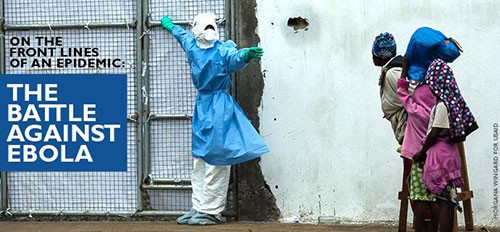
2. Ebola: The Road to Zero
“Our focus now is getting to zero. Because as long as there is even one case of Ebola that’s active out there, risks still exist. Every case is an ember that, if not contained, can light a new fire. So we’re shifting our focus from fighting the epidemic to extinguishing it.” —President Barack Obama
While outbreaks of Ebola have occurred in the past, the epidemic in West Africa reached major urban areas for the first time. Guinea, Sierra Leone, and Liberia proved to be particularly vulnerable. USAID is working within an international community and alongside local partners to fight Ebola and lessen the secondary impacts of the outbreak, leveraging the potential of worldwide collaboration. Our goal is to help affected countries end the epidemic, restore primary health services and be better prepared to prevent any future outbreaks from becoming epidemics.
- Read about our work to strengthen Liberia’s healthcare system in the wake of the Ebola epidemic.
- Catch a glimpse of the realities of fighting Ebola in Facing Death Six Days a Week, through USAID’s storytelling hub.
- Watch Ebola: The Road to Zero, a short film on USAID’s relief and recovery efforts in West Africa.
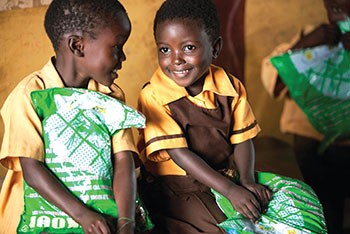
3. The President’s Malaria Initiative: A Six-Year Strategy to Reduce Malaria Mortality
The year 2015 marks a decade of U.S. leadership in the global fight against malaria through the U.S. President’s Malaria Initiative (PMI). Announced by President George W. Bush in 2005, PMI began with three focus countries the following year. Today, PMI supports 19 countries in sub-Saharan Africa and the Greater Mekong sub-region.
In February, PMI launched its six-year Strategy 2015–2020, guiding its efforts to support focus countries to reduce malaria-related mortality and substantially decrease malaria morbidity toward the long-term goal of elimination. PMI’s Ninth Annual Report to Congress was released in April.
In December, the World Health Organization released its World Malaria Report, which stated that malaria deaths in Africa have dropped 66 percent among all age groups and by 71 percent among children under 5 since 2000. Worldwide, more than 6 million lives have been saved, a vast majority of which have been children. USAID continues to contribute to these successes through PMI.
- Read the PMI Strategy 2015–2020 [PDF, 8.8MB], which guides PMI’s efforts towards the long-term goal of malaria elimination.
- Learn about PMI’s recent results in the Ninth Annual Report to Congress [PDF, 6.4MB].
- Learn more about the present state of the battle against malaria in the WHO’s 2015 World Malaria Report [PDF, 7.2MB].
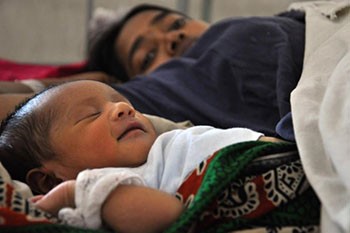
4. Newborn Survival: Giving All Newborns a Chance to Survive and Thrive
Each year, more than 2.9 million newborns die within a month of being born. Preterm babies account for one third of these deaths, making prematurity the leading cause of child mortality. Serious infections also pose a significant threat to newborn survival, accounting for nearly a quarter of all newborn deaths, the majority of which occur in South Asia and sub-Saharan Africa and are preventable through timely access to high-quality care during pregnancy, delivery, and in the first hours and days after birth.
Many of these deaths are preventable through simple, known interventions such as kangaroo mother care, clean cord care, immediate breastfeeding, simple resuscitation and recognizing when a sick baby needs facility care. In April, The Lancet published an article demonstrating that newborn infections can be effectively managed with simplified treatments in the community setting. In November, USAID-funded Every Preemie–SCALE released its country profiles for 23 priority countries for preventing preterm birth complications.
Ending preventable newborn deaths will require the cooperation of stakeholders at the national, community, and family levels. USAID is intensifying efforts to develop, test, and scale up simple, low-cost approaches with the greatest potential to prevent deaths and treat severe illnesses in low-resource settings, working with international, country-level, and local leaders towards the goal of ending preventable newborn deaths.
- Learn about community management of neonatal infections from The Lancet, The Lancet Global Health and the USAID press release
- View the USAID Newborn Health Photo Gallery.

5. 50 Years of Family Planning Assistance
2015 marked 50 years of the U.S. Government’s investment in international family planning programs. For half a century, USAID’s program has focused on enabling women and couples to make informed, voluntary decisions about whether to have children, and, for those who would like children, when and how many to have. Since the Agency began providing family planning services in 1965, the use of modern contraceptives in the developing world has increased by a factor of 4, from less than 10 percent on average to 46 percent. USAID has played a crucial role in this success.
Today, 290.6 million women and girls in the world’s poorest countries are using modern methods of contraception, yet millions more want to avoid or delay a pregnancy but cannot access the information and tools to do so. USAID is a critical supporter of Family Planning 2020, a global partnership aimed at providing access to voluntary family planning information, contraceptives and services to 120 million more women and girls in the world’s poorest countries by 2020.
The FP2020 Commitment to Action 2014‐2015 (third annual progress report) details progress and achievements made since the landmark 2012 London Summit on Family Planning. In just 3 years, 24.4 million more women and girls have begun to use modern methods of contraception.
- Learn more about USAID's efforts in family planning and reproductive health.
- Read about FP2020 in the FP2020 Commitment to Action 2014–2015.
- Read the press release announcing that more women than ever are using modern contraceptives in the world's poorest countries.
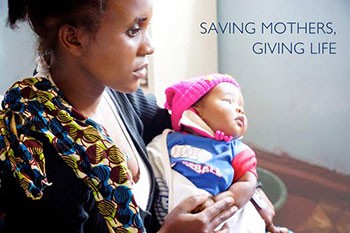
6. Saving Mothers, Giving Life Partnership Cuts Maternal Mortality in Half
Saving Mothers, Giving Life is a public-private partnership led by the U.S. Government to reduce dramatically maternal and newborn mortality in sub-Saharan African countries. The partnership was launched in 2012 in Uganda and Zambia, and expansion into Nigeria was announced this year.
In October, the partnership released its Mid-Initiative Report at the Global Maternal, Newborn and Child Health Conference in Mexico City. In just 2.5 years, target facilities showed a 45 percent reduction in maternal deaths in Uganda and a 53 percent reduction in Zambia. The number of women giving birth in a facility rose by 30 percent in Uganda and by 43 percent in Zambia.
Saving Mothers, Giving Life implements evidence-based interventions at the district level. Through scaling up the Saving Mothers, Giving Life model and replicating its approach in other countries, we can help bring within reach our vision to end preventable child and maternal deaths within a generation.
- Read the full Mid-Initiative Report [PDF, 4.9MB].
- Learn more about USAID's Maternal and Child Health efforts.
- Read the Impact blog by Claudia Morrissey Conlon, MD, MPH.
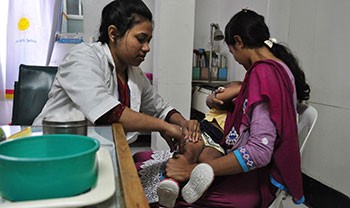
7. U.S. Pledges $1 Billion to Help Immunize 300 Million More Children
On January 27, Germany hosted the replenishment conference for Gavi, The Vaccine Alliance, in Berlin. Created in 2000, Gavi brings together the public and private sectors with the shared goal of creating equal access to new and underused vaccines for children living in the world’s poorest countries. Since its inception, Gavi has helped to immunize nearly 500 million children, drive down the costs of life-saving vaccinations, and expand the poorest countries’ vaccination programs.
Providing new vaccines to the world's poorest countries is a key driver in ending preventable child deaths by 2035. Vaccines are essential to help children reach the age of 5 – a milestone birthday, after which children are far more likely to survive to adulthood.
- Read the press release for the United States’ historic pledge.
- Read the "Saving Children's Lives: USAID’s Support for Immunization" fact sheet [PDF, 126KB].
- Read the Impact blog on innovative immunization programs in India.

8. $12 Billion Mobilized through the Global Financing Facility
The Global Financing Facility (GFF) is an innovative financing approach among donors and host countries to accelerate efforts to end preventable newborn, child, adolescent, and maternal deaths and improve the health and the quality of life for women, adolescents, and children, in support of the Every Woman Every Child global strategy.
The GFF focuses on narrowing the financing gap by incentivizing countries to allocate a higher proportion of funding from the World Bank’s International Development Assistance (IDA) concessional loans to maternal and child health spending. Countries will also be assisted to develop strategies for sustainable financing and domestic resource mobilization.
At the Financing for Development conference, held in July in Addis Ababa, Ethiopia, USAID committed $50 million through the GFF to support four African countries to scale up national strategies and efforts to end preventable child and maternal deaths. USAID’s country-specific contributions, in association with other donor funding through the GFF trust funds, could leverage more than $1 billion through IDA loans.
- Read the press release about the launch of the Global Financing Facility.
- Find out more about the Global Financing Facility.
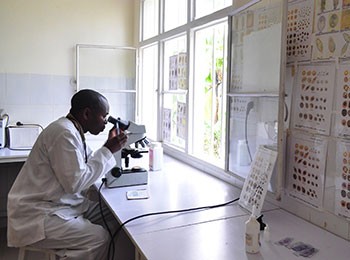
9. Building Strong, Resilient Health Systems
Individuals, communities and nations depend on health systems. Strong health systems prevent, detect, and respond to deadly diseases, thereby preventing outbreaks from becoming epidemics, and promote individuals’ and communities’ well-being through the provision of essential care services. During the tragic Ebola epidemic, health systems in parts of West Africa were overwhelmed by the emerging epidemic. Health system failure threatens global security and pushes more people into the depths of extreme poverty. USAID is committed to strengthening health systems across the globe and working to ensure quality, affordable health services for people everywhere.
In October, USAID released a 5-year Vision for Health Systems Strengthening. Building on the tremendous progress that has been made in global health over the past 20 years, the Vision guides efforts to end preventable child and maternal deaths, achieve an AIDS-free generation, and protect communities from infectious diseases. The Vision targets our efforts and resources toward proven, cost-effective interventions that help raise communities and countries from poverty to prosperity.
- Read the Vision for Health System Strengthening 2015-2019 [PDF, 1.6MB].
- Learn more about USAID's work in Health Systems Strengthening.
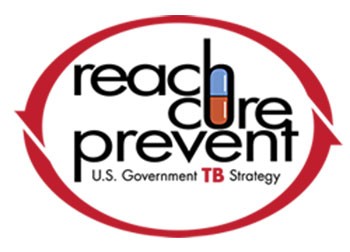
10. Tuberculosis: The World’s Deadliest Infectious Disease
From 2000 to 2013, more than 37 million people were cured of tuberculosis. Tuberculosis deaths have been reduced by almost half since 1990, and the world has achieved the Millennium Development Goal target of reversing the spread of the disease by 2015. USAID’s efforts have been a major catalyst in decreasing the tuberculosis burden in many countries through direct action and through building partnerships with national multilateral organizations, civil society, and affected communities.
Despite these successes, the World Health Organization declared tuberculosis the world’s leading infectious disease in the 2015 World Tuberculosis Report.
The U.S. Government joined global partners in May 2014 and pledged to reduce tuberculosis deaths by 95 percent and new tuberculosis infections by 90 percent by 2035. Under the U.S. Government’s Global Tuberculosis Strategy, USAID will work with its partners around the world to reach every person with tuberculosis, cure those in need of treatment, and prevent the spread of disease and new infections. In December, the White House released the National Action Plan for Combating Multidrug-Resistant Tuberculosis in support of the prevention, detection, and control of multidrug-resistant tuberculosis.
- Watch the video "Story of Mary: TB is Curable" on the challenges of childhood tuberculosis.
- Read the U.S. Government Global Tuberculosis Strategy 2015–2019 [PDF, 868KB].
- Learn more about the National Action Plan for Combating Multidrug-Resistant Tuberculosis [PDF, 773KB].
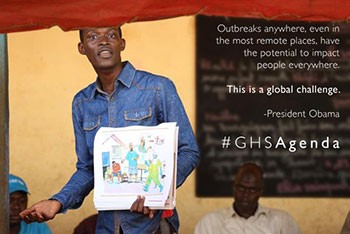
11. An Agenda for Global Health Security
When the Global Health Security Agenda (GHSA) was launched on February 13, 2014, the United States made a historic commitment to assist at least 30 countries to achieve specific targets toward measurable capacity to prevent, detect and rapidly respond to infectious disease threats. The U.S. Government Government is providing technical and financial assistance to develop 5-Year roadmaps in partner countries that establish milestones aimed at achieving all of the GHSA targets and to advance partnership with other governments, donors, and international organizations to achieve the goals of the GHSA.
In July, the U.S. Government announced its intent to invest more than $1 billion to prevent, detect, and respond to future infectious disease outbreaks in 17 priority countries. On November 16, during the G-20 Leaders’ Summit in Antalya, Turkey, President Obama announced the 13 remaining partner countries, which the United States will assist to achieve of the targets of the GHSA.
- Learn more about the Global Health Security Agenda.
- Learn more about the 2014 launch of the GHSA and the announcement of priority countries.
- Watch President Obama's video on GHSA Commitments.
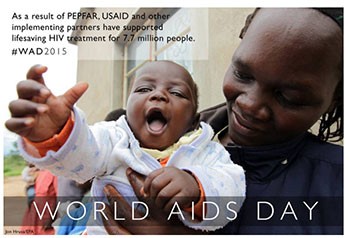
12. World AIDS Day 2015: The Time to Act Is Now
USAID is a key partner in the U.S. President’s Emergency Plan for AIDS Relief (PEPFAR). At the U.N. General Assembly in September, President Obama announced bold and aggressive treatment targets for 2016 and 2017 under PEPFAR. By the end of 2017, PEPFAR will support 12.9 million people on life-saving antiretroviral treatment and provide 13 million voluntary medical male circumcisions for HIV prevention. Additionally, PEPFAR will reduce HIV incidence by 40 percent among adolescent girls and young women.
On World AIDS Day, December 1, we celebrated the progress that has been made and addressed the further action that is needed in the fight against HIV and AIDS.
USAID and other implementing partners provided HIV counseling and testing for more than 68.2 million people in fiscal year (FY) 2015 and helped more than 14.7 million pregnant women receive HIV testing and counseling. In FY 2015, 831,500 women tested positive for HIV and were provided with antiretroviral medications to prevent mother-to-child transmission of the virus.
The global community is working diligently to implement the (UNAIDS) Fast-Track Strategy to achieve its 90-90-90 targets and end the HIV/AIDS epidemic by 2030. The U.S. Government recognizes the urgency in controlling this epidemic, and USAID remains committed in its mission to achieve an AIDS-free generation.
- Learn more about World AIDS Day 2015 and watch President Obama’s and Ambassador Birx’s World AIDS Day messages.
- Read about USAID’s progress under PEPFAR [PDF, 688KB].
- Read the WHO’s recent guidelines to help avert 21 million deaths by 2030.
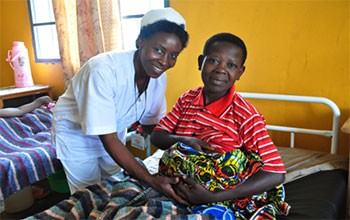
13. Improving Nutrition for Women and Young Children
Good nutrition is central to successful development for individuals and societies. Undernutrition contributes to 45 percent of under–5 deaths and makes children more susceptible to life-threatening illnesses. When young children and their mothers do not have access to nutritious foods and a diverse diet, their physical and cognitive development is negatively affected.
USAID recognizes nutrition’s importance and is committed to reducing chronic malnutrition, measured by stunting, by 20 percent, equating to 2 million fewer stunted children worldwide. In 2014, USAID rolled out its Multi-Sectoral Nutrition Strategy (2014–2025), which guides USAID’s nutrition work in more than 20 countries across sectors such as health, agriculture, food assistance, and water, sanitation and hygiene (WASH). An ongoing series of technical guidance briefs support the implementation of the Strategy.
In September, the Scaling Up Nutrition Movement 2015 Annual Progress Report was released, and the 2016–2020 Strategy was drafted around the meeting of the UN General Assembly. The report notes significant progress toward reaching nutrition goals in some countries, while also stressing the need for continued action and advocacy in order to achieve global nutrition targets in the next 5 years. In November, WHO, UNICEF, and USAID released the jointly-produced Improving Nutrition Outcomes with Better Water, Sanitation and Hygiene: Practical Solutions for Policies and Programmes. This document details how WASH practices can be integrated into nutrition programming in order to address malnutrition in all its forms, ultimately contributing to reaching the 2025 Global Nutrition Targets and the Sustainable Development Goals.
- Learn more about USAID’s work in nutrition.
- Read the Multi-Sectoral Nutrition Strategy 2014–2025 and the implementation briefs.
- Read about the Scaling Up Nutrition Movement.
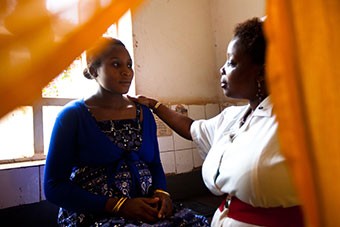
14. Ensuring Respectful Maternity Care
USAID has been a leading voice in the growing global consensus to end preventable maternal mortality. The direct causes of maternal death are well-known, as are effective interventions to mitigate them. Those interventions can be best delivered through quality maternity care provided by skilled health providers in facilities.
Disrespect and abuse of women during maternity care can cause women and their families to distrust the health care system and opt for higher-risk homebirths, with unskilled traditional birth attendants. Women often choose to deliver with traditional birth attendants in part because they treat women and their families with respect and dignity and are themselves trusted and known within their communities.
In 2015, the World Health Organization released a statement [PDF, 708KB] on the prevention and elimination of disrespect and abuse during facility-based childbirth. The statement came as a culmination of a multi-stakeholder approach, spearheaded by USAID, to measure the prevalence of disrespect and abuse; design, test, and refine a package of interventions to promote respectful maternity care; and advocate for the inclusion of respectful maternity care in the context of a rights-based and humanistic approach to childbirth.
- Learn more about USAID’s efforts in Maternal Health.
- Read the Ending Preventable Maternal Mortality: Maternal Health Vision for Action.
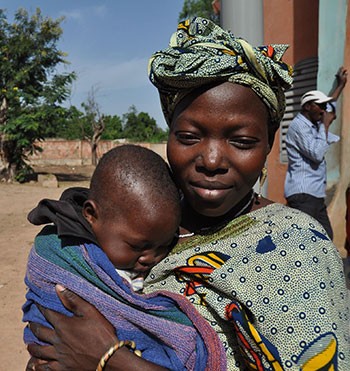
15. Improving Health Outcomes through Implementation Research and Delivery Science
A persistent challenge in the era following the Millennium Development Goals is aligning interventions and resources to have an impact on population health in low- and middle-income countries. Implementation research and delivery science (IRDS) can help improve the implementation and expansion of interventions and contribute to improvements in health outcomes.
USAID and its partners drafted and built consensus around the Statement on Advancing Implementation Research and Delivery Science [PDF, 328KB], introduced at the Third Global Symposium for Health Systems Research and endorsed by dozens of individuals and institutions globally.
In this past year, USAID and the Collaboration for IRDS have actively engaged a range of stakeholders and partners, including lower- and middle-income country Ministries of Health, academia, non-governmental organization and private sector implementers, research institutions, and other bilateral and multilateral development agencies. USAID and partners have worked to identify priorities around IRDS and highlight the need for further commitment to the field in order to solve critical bottlenecks in scaling up life-saving interventions and approaches.
- Learn more about USAID’s work in Implementation Research and Delivery Science.
- Read about the work of the Collaboration for IRDS.
Newsletter Archive
Breastfeeding and Nutrition
August 2017
Global Health Financing
July 2017
Maternal and Child Survival
June 2017
Human-centered Design. What is it?
May 2017
Focus on Infectious Diseases: 2017
April 2017
Global Health Highlights: 2016
December 2016
A Year in Review: 2015
January 2016
World AIDS Day 2015 – Special Edition
December 2015
USAID's News Storytelling Hub - Extreme Possibilities
August 2015
A New Roadmap to Health and a TB Diagnostic Test Help Improve Health Outcomes
June 2015
World AIDS Day 2014 – Special Edition
December 2014
Fighting Ebola – Special Edition
October 2014
Maternal and Child Survival – Special Edition
October 2014
World Contraception Day 2014 – Special Edition
September 2014
AIDS 2014 E-News – Special Edition
July 2014
World TB Day 2014 Special Edition
March 2014
AIDS 2014 E-News – Special Edition
December 2013
World AIDS Day 2013 – Special Edition
December 2013
Family Planning Updates
November 2013
Tuberculosis Special Edition
November 2012
STAY CONNECTED
Subscribe to the Global Health E-Newsletter and updates by entering your e-mail address below. Take a look at some of our past issues.
Follow USAID Global Health on Social Media:







Comment
Make a general inquiry or suggest an improvement.